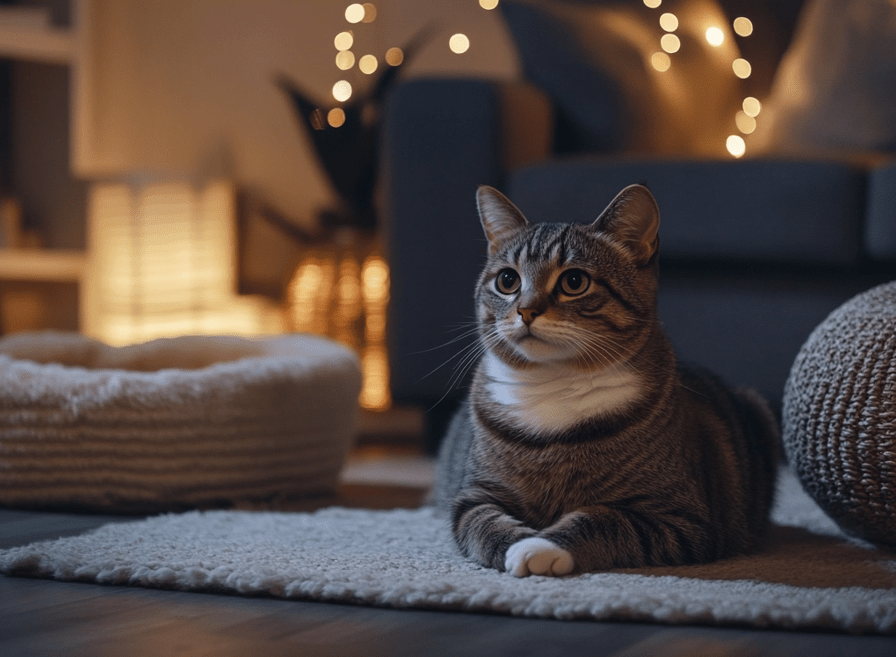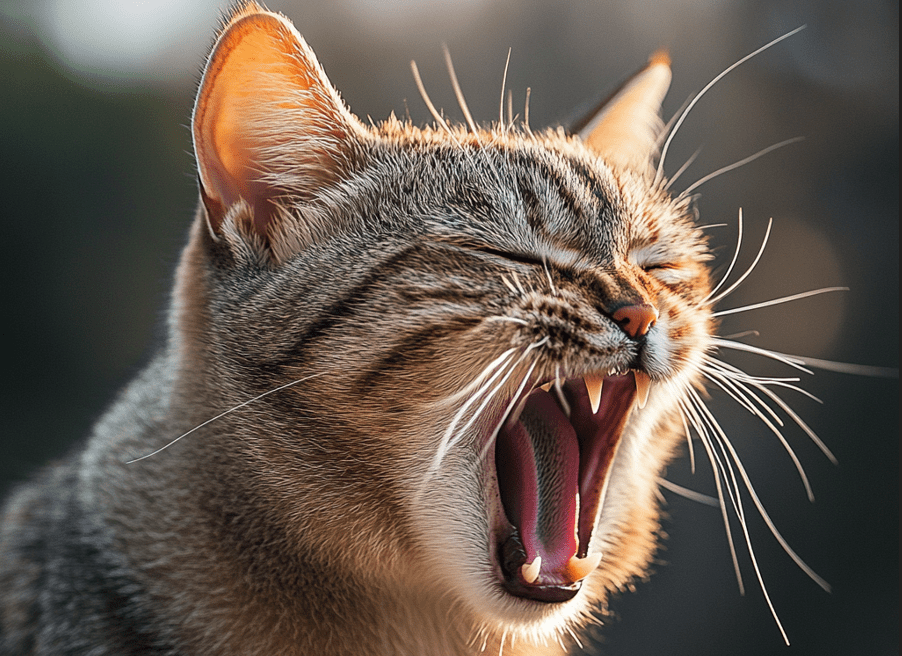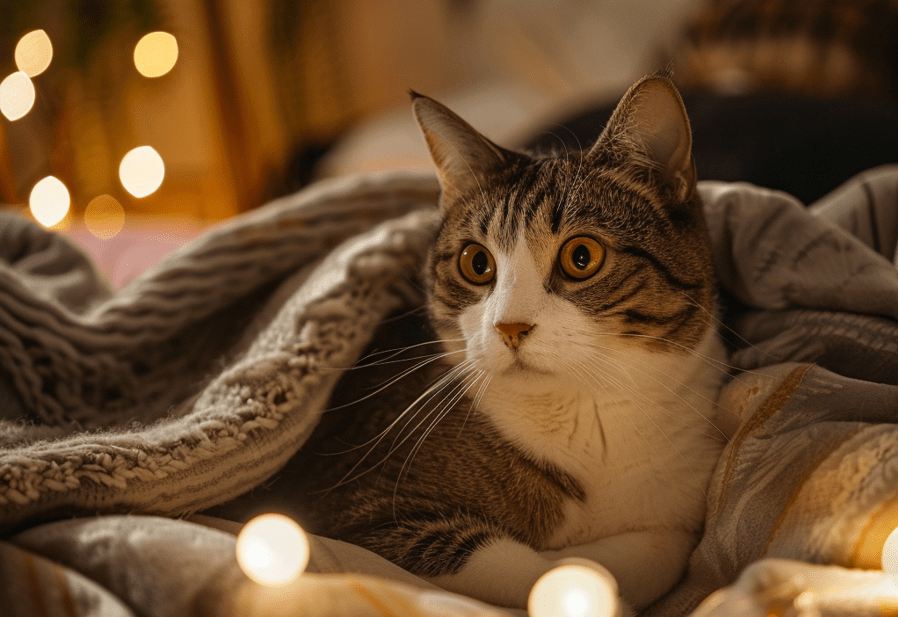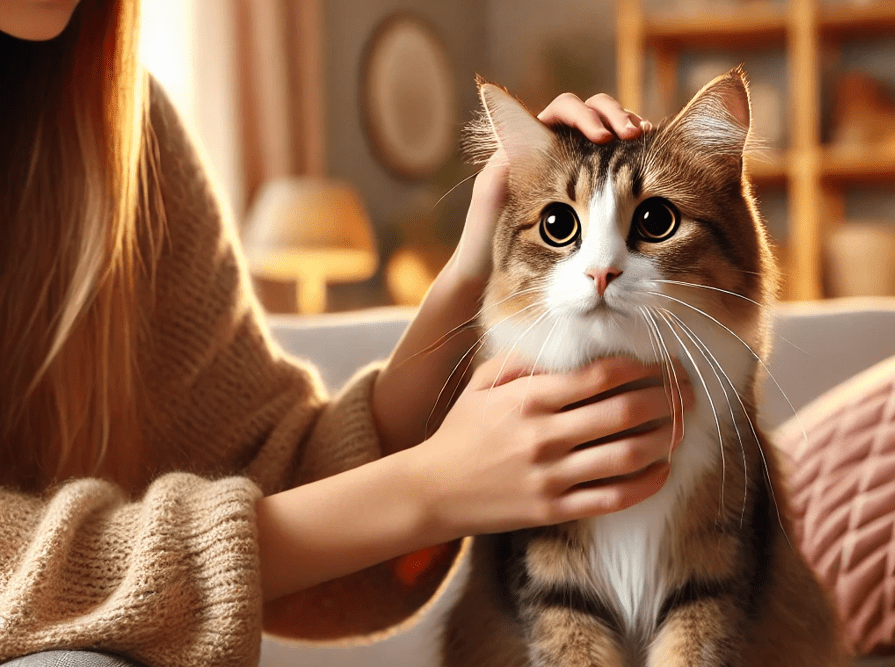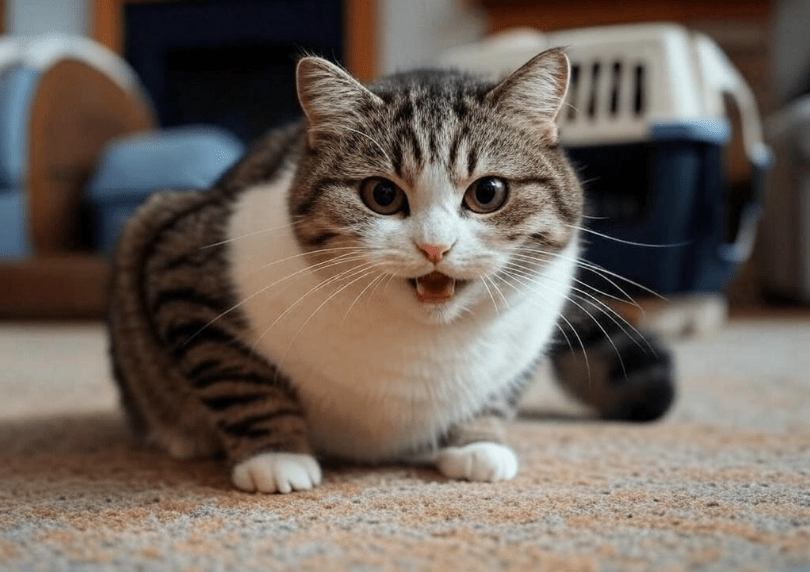
You’ve just brought your beloved feline home from the vet, expecting them to relax—but instead, they’re hissing, swatting, or hiding. If your cat is displaying aggressive cat behavior after vet visit, you’re not alone. Many pet owners face this confusing and stressful situation.
Cats are creatures of habit, and vet visits disrupt their sense of security. The unfamiliar smells, handling, and possible discomfort from procedures can leave them feeling vulnerable. This often leads to defensive aggression. But don’t worry—there are proven ways to help your cat feel safe again.
In this guide, we’ll explore:
1.Why cats become aggressive after vet visits
2.The science behind feline stress responses
3.7 effective strategies to calm an agitated cat
4.How to prevent future aggression
5.When to seek professional help
6.By the end, you’ll have a clear action plan to restore harmony in your home.
Why Do Cats Act Aggressively After a Vet Visit?
Understanding the root cause of aggressive cat behavior after vet visit is the first step to solving it. Cats are highly sensitive animals, and several factors contribute to their post-vet stress:
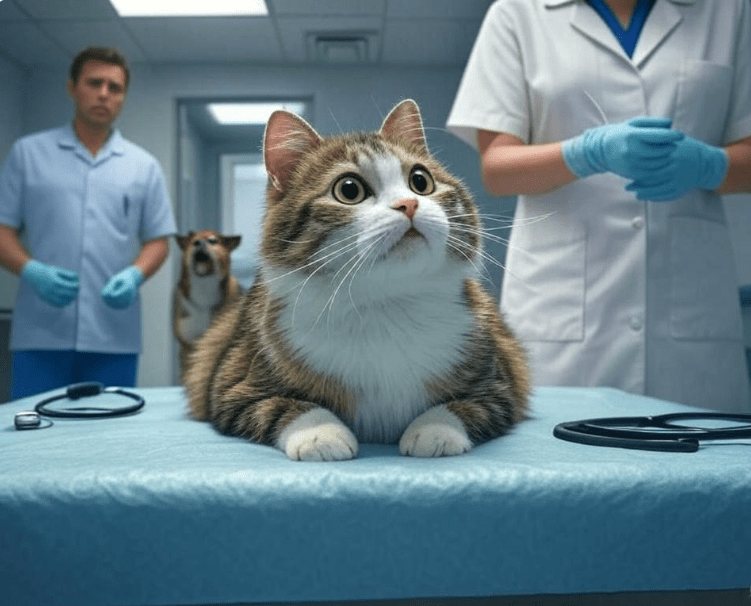
1.Fear and Stress from the Vet Experience
Veterinary clinics are filled with unfamiliar scents (other animals, disinfectants) and sounds (barking dogs, strange voices). Cats associate these with danger, triggering their fight-or-flight response. If they couldn’t escape at the vet, they may lash out at home.
2.Pain or Discomfort from Procedures
If your cat received vaccinations, blood tests, or other treatments, they might be sore. Pain can make even the gentlest cat irritable and defensive.
3.Residual Effects of Sedation or Anesthesia
Some cats remain disoriented after sedation, leading to confusion and aggression. They may not recognize their surroundings or even their owners temporarily.
4.Scent Changes Confuse Them
Cats rely heavily on scent for recognition. The vet’s office leaves new smells on their fur, making them feel “different.” This can cause other pets at home to react aggressively, further stressing your cat.
5.Territorial Instincts Kick In
After being away, your cat may re-enter their home as if it’s unfamiliar. They might act aggressively to re-establish dominance or security.
Now that we know why it happens, let’s explore how to soothe your cat effectively.
7 Proven Ways to Calm Aggressive Cat Behavior After Vet Visit
1.Create a Quiet Sanctuary
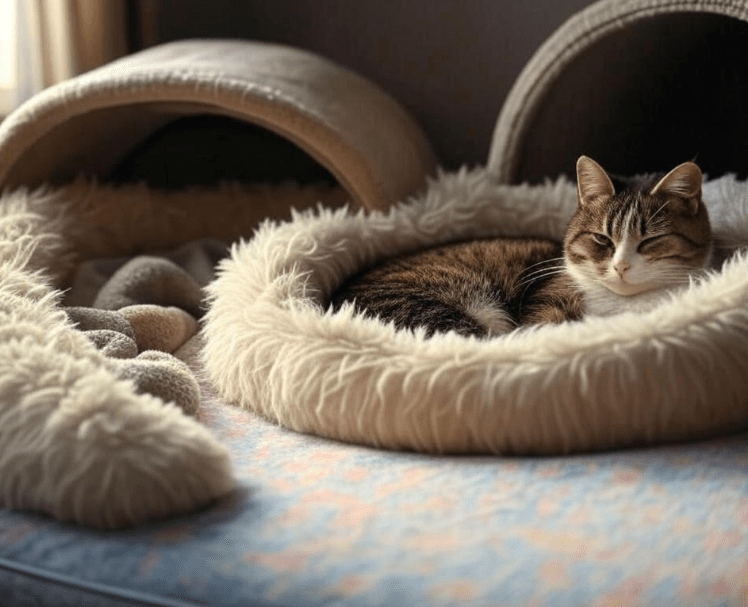
After a vet visit, your cat needs a peaceful retreat to decompress. Choose a quiet room with minimal foot traffic and set up their favorite bed, a cozy blanket, and a hiding spot like a covered cat cave or cardboard box. Keep the space dimly lit and free from loud noises. Allow your cat to come out on their own terms—forcing interaction will only increase their stress. This safe space helps them regain their sense of security at their own pace.
2.Restore Familiar Scents
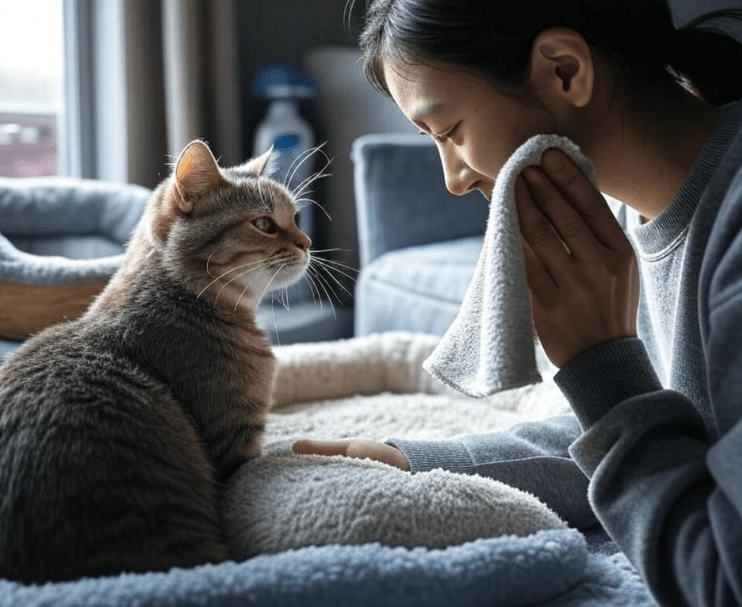
Cats rely heavily on scent for comfort, and vet visits leave unfamiliar smells on their fur. To help them feel at home again, gently rub a soft cloth on their cheeks (where their natural pheromones are) and wipe it along their body. Using a feline pheromone spray like Feliway on their bedding can also provide reassurance. If their carrier smells like the vet, wipe it down and place a familiar-smelling blanket inside to make it feel safe again.
3.Approach With Patience and Care
When interacting with your cat after a vet visit, move slowly and avoid direct eye contact, which can feel threatening. Speak in a soft, calm voice and try the “slow blink“—gently closing and opening your eyes—to show you mean no harm. Let them sniff your hand before petting, and stick to areas they usually enjoy, like under the chin. If they seem tense or retreat, give them more space. The key is to let them initiate contact when they’re ready.
4.Check for Pain or Discomfort
Aggression can be a sign of pain, especially if your cat had procedures like vaccinations or blood work. Watch for signs like limping, excessive licking of one spot, or flinching when touched. If you suspect discomfort, contact your vet—they may recommend pain relief options safe for cats. Never give human medications, as many are toxic to felines. Addressing physical discomfort can quickly improve their mood.
5.Reintroduce Other Pets Gradually
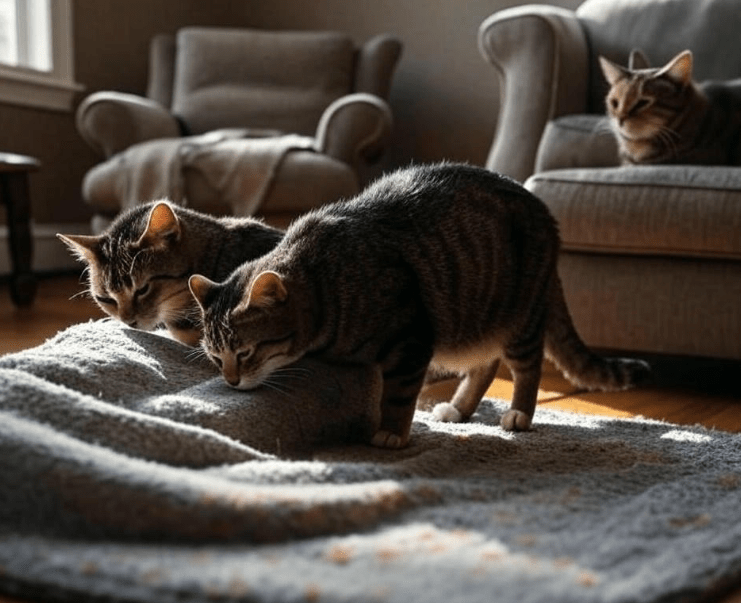
If you have multiple pets, your cat’s unfamiliar scent after the vet may cause tension. Keep them separated at first, then swap bedding between them so they can get used to each other’s scents again. When reintroducing them, supervise closely and look for positive body language like relaxed postures or slow blinking. If either pet seems stressed, separate them and try again later.
6.Maintain a Calm Environment
Loud noises, sudden movements, or too much activity can worsen your cat’s stress. Keep the household quiet for a few days, and avoid inviting guests over during this adjustment period. Soft background music or white noise can help mask startling sounds. Consistency and predictability will help your cat feel secure again.
7.Rebuild Positive Associations
Once your cat starts to relax, reinforce good feelings with gentle play sessions using their favorite toys or special treats. This helps them associate post-vet time with pleasant experiences rather than fear. Over time, this can make future vet visits less stressful for both of you.
By following these steps, you’ll help your cat recover from their vet visit with minimal stress and aggression. Remember—patience is key. Most cats return to their normal selves within a few days when given the right support.
Preventing Future Aggression After Vet Visits
While some cats will always dislike vet trips, these strategies can minimize stress:
Use a Comfortable Carrier: Leave the carrier out weeks before the visit with cozy bedding inside so it doesn’t only signal vet trips.
Try Vet Home Visits: Some vets offer home consultations, reducing travel stress.
Desensitize Your Cat: Practice short car rides or handling their paws/ears at home to make vet exams less traumatic.
Ask for Anti-Anxiety Medication: For extremely anxious cats, vets may prescribe mild sedatives for future visits.
When to Seek Professional Help
Most cases of aggressive cat behavior after vet visit resolve within a few days. However, consult your vet if:
1.Aggression lasts more than a week
2.Your cat stops eating or drinking
3.They show signs of severe pain (hunched posture, excessive grooming of one spot)
4.They injure themselves or others
A veterinary behaviorist can help if aggression becomes a recurring issue.
A Real-Life Example: How Luna Learned to Trust Again

Luna, a usually affectionate tabby, turned into a hissing ball of fury after her dental cleaning. Her owner, Sarah, was heartbroken when Luna hid under the bed for two days, swatting at anyone who came near. Following vet advice, Sarah set up a quiet room with Luna’s favorite blanket and used Feliway diffusers. She sat nearby, reading aloud in a calm voice, and offered tuna treats. By day three, Luna cautiously approached. Within a week, she was back to cuddling—proof that patience and the right techniques work.
Final Thoughts
Dealing with aggressive cat behavior after vet visit can be challenging, but understanding your cat’s emotions makes a huge difference. By providing a safe space, restoring their scent, and reintroducing comfort gradually, you’ll help them recover faster.
Remember, aggression is usually temporary—your cat isn’t being “mean,” they’re just scared. With love and patience, they’ll return to their normal, loving selves.

